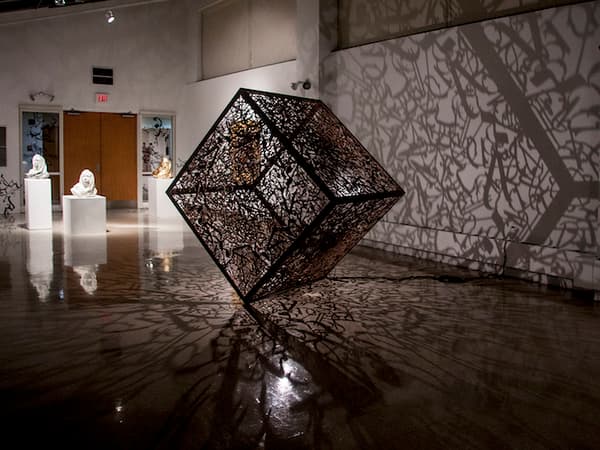In the world of visual art, materials are not just building blocks or technical elements. They are full-fledged participants in the creative process, each with its own texture, history, symbolism, and energy. Artists and designers around the world — and especially in Slovenia — are learning to listen to these materials, to engage in dialogue with them, to oppose them to one another, thereby creating harmonious compositions through apparent conflict. Contrast is not the enemy of harmony but its source. It is in the clash of wood and metal, glass and stone, textile and concrete that expressiveness is born — capable of evoking emotion and shaping a unique artistic language.
Today, as contemporary art increasingly penetrates public spaces, homes, and even digital environments, the theme of material dialogue takes on special significance. By working with contrasts, artists not only generate visual interest but also tell stories — about nature and industry, the past and the future, about humanity and its environment.
Materials as the Language of Visual Art
Since ancient times, people have sought to express themselves through materials available in their surroundings. Stone, wood, clay, wool, metal — all of these served not only utilitarian purposes but also became tools of aesthetic expression. Yet contemporary art has moved further: now, materials don’t just serve a function — they actively interact with one another, generating tension and balance.
In Slovenia, where landscapes are full of contrasts — from mountainous slopes to coastal shores — designers often draw inspiration from nature, striving to recreate these same sensations in their work. Sculptors combine granite with transparent plastic, artists create installations that merge organic moss and recycled metal, and architects play with wooden textures against glass facades. This is not merely a visual game, but a way to express contemporary concepts: sustainability, awareness, and emotional connection with the surrounding world.
The Aesthetics of Opposition in Contemporary Practice
Attention to contrast as a means of enhancing impact has become particularly relevant in recent decades. The work of contemporary Slovenian designers such as Nuša Zvonar and the studio OFIS Architects proves that harmony can be born from conflict. Contrast can be not only visual, but also tactile, auditory, or thermal.
Take, for example, interior design. The cold smoothness of marble intensifies the warmth of raw wood. Soft textile panels set against brutalist concrete create a feeling of protection and comfort. In these contrasts, chaos is not born — instead, a clear and emotionally rich composition emerges. The same applies to visual art: a metal sculpture containing fragile glass elements speaks to the duality of the modern world, to the balance between strength and vulnerability.
The Symbolism and Philosophy of Material
Each material carries its own associative weight. Wood is associated with nature and warmth, metal with progress and strength, glass with transparency and fragility, textile with comfort and corporeality. When an artist combines them in a single composition, they unite different — sometimes opposing — meanings. It is similar to poetry, where every word is filled with metaphors and references.
In Slovenia, where historical and natural heritage are closely intertwined, this material philosophy is particularly vivid. Local artisans often work with stone quarried in the Karst region, combining it with modern polymers or LED elements. The result is not just an aesthetic object, but a symbol of a bridge between tradition and innovation.
The Practice of Sustainable Contrast
Today’s interest in contrast goes hand in hand with a growing concern for sustainability. Many contemporary artists and designers deliberately use recycled or eco-friendly materials. The contrast between “natural” and “technological” in this case acquires an additional layer of meaning — it becomes not only a visual play, but also a commentary on the ecological situation in the world. In Slovenia, there is growing support for initiatives that empower local craftsmen and startups developing new materials from fungi, seaweed, or recycled textiles.
By choosing such materials, artists engage not only in a dialogue among themselves, but also with society. Their works become occasions for discussion — about how to live in harmony with the planet, how to rethink heritage, and how to create spaces where there is room for both stone and light, both substance and meaning.
Conclusion: When Contrast Becomes Harmony
The dialogue of materials is not just a design technique, but a mode of thinking. It is a way to unite difference, to find commonality in opposition, to create emotional depth through texture, density, and color. Artists and designers in Slovenia demonstrate that it is precisely through contrast that a new aesthetic is born — honest, multilayered, and alive.
Contemporary art is an art of feeling, and when cold metal touches rough wood, the viewer senses it on a physical and emotional level. Harmony is achieved not through uniformity, but through a respectful and thoughtful clash of differences. And in this contrast, like in a good conversation, true art is born.



